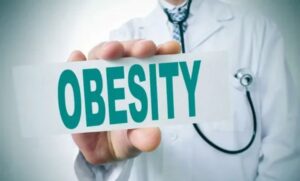If you get a burning sensation in your chest frequently, especially after eating or resting, the problem could be more than simply heartburn. Although it might seem like heart problems, discomfort in your chest could be Gastroesophageal Reflux Disease (GERD), which is common and not always well understood. Across the globe, GERD affects a lot of people and leads to big changes in how they live and feel every day. To get the best treatment and improve life quality, you should learn about GERD’s causes, symptoms, and how to manage it, possibly without expensive medicines!
What Does GERD Refer To?
GERD stands for a chronic disorder where the stomach’s food and acid move back into the esophagus and cause it to become inflamed. Because the LES muscle fails to do its job, sometimes the acid in the stomach moves into the esophagus, causing acid reflux. The symptoms can be as minor as discomfort or as major as serious complications. For more information and guidance on managing GERD and related health topics, visit Bear Goal.
A Look at How Many and the Effect on Society
GERD is a common gastrointestinal problem all over the world. Western countries have close to 10-20% of people diagnosed with obesity, but in Asia, this figure drops to below 5%. The disorder causes physical discomfort and drives up healthcare spending as well as reduces well-being.
Common Symptoms
- Heartburn: A burning feeling in the chest, usually felt just after eating, is known as heartburn.
- Regurgitation: An acid-flavored backing up of gastric juices into the throat or mouth.
- Dysphagia: Difficulty in swallowing
- Chest Pain: Tends to happen when you are lying down or bending forward.
- A chronic cough describes ongoing coughing that isn’t linked to lung diseases.
Not every person with GERD will feel heartburn. Because some patients display no symptoms, finding the disease can be tough.
Pathophysiology
The emergence of GERD is caused by several different conditions. If the LES (Lower esophageal sphincter) stops working properly, it allows the gastric content mixed with food to reflux back toward the esophagus. When part of the stomach pushes upwards into the chest, causing a hiatal hernia, it disrupts LES function.
Sluggish movement of food into the small intestine from the stomach can trigger high pressure and reflux. A disorder of esophageal motility means that digestive juices may not be cleared from the esophagus. For personalized advice and support, you can request a free consultation with our nutrition experts.
As a result of these factors, gastric contents come into contact with the esophageal lining, which can lead to symptoms and possible issues.
Types of GERD
1. Non-Erosive Reflux Disease
NERD refers to cases where the usual symptoms of GERD appear without finding mucosal damage during endoscopy.
Features:
- Both heartburn and regurgitation often occur in these individuals.
- Evidence of esophageal erosion is absent during the examination.
- Pneumonic fibrosis is often diagnosed by pH monitoring after endoscopy results are normal.
About 60-70% of GERD cases are caused by NERD.
2. Erosive Reflux Disease
When acid stays in the esophagus for too long, causing direct damage to the esophagus, it is called Erosive Reflux Disease.
Features:
- Redness, inflammation, and ulcerations are commonly seen during an endoscopy.
- The effects of symptoms can be more dangerous than in NERD.
The method used to grade Erosive Reflux Disease in the Los Angeles Classification is widely recognized by experts everywhere. It is used to assess esophageal erosions or ulcers that may develop after acid reflux happens repeatedly.
It lets clinicians evaluate how much damage the tissue has, judge the results of treatment, and identify the risk for strictures or Barrett’s esophagus.
| Grade | Description |
|---|---|
| A | One or more mucosal breaks ≤5 mm in length that do not extend between the tops of two mucosal folds. |
| B | At least one mucosal break >5 mm in length, but not continuous between the tops of two mucosal folds. |
| C | Mucosal breaks are continuous between ≥2 folds, involving less than 75% of the esophageal circumference. |
| D | Mucosal breaks involving ≥75% of the esophageal circumference. |
Risks:
- More chance of experiencing strictures and Barrett’s esophagus.
- About 30% of people diagnosed with GERD have erosive reflux disease.
Associated Conditions
Several other health conditions are often linked to GERD.
- Asthma can be triggered when refluxed acid irritates the airways.
- Acid reflux may cause coughing that lasts a long time and irritated vocal cords, known as laryngitis.
- Enamel on teeth can be weakened by the acid found in the stomach.
- For some, reflux that happens at night can interfere with their sleep.
- Esophageal strictures refer to the narrowing of the esophagus because of scarring caused by acid.
Taking care of GERD well can reduce your chances of getting other digestive issues.
Medical Nutrition Therapy
How you eat can greatly help control your symptoms of GERD. Changing your diet in certain ways can greatly decrease reflux episodes. In Gastroesophageal Reflux Disease (GERD), the main objective of MNT is to minimize acid exposure to the esophagus and make the LES work better. For more helpful dietary and lifestyle advice, visit Nutrition & Healthy Eating.
Here’s what diet and how you eat can do to manage GERD:
1. Anti-Inflammatory food and Polyphenols
GERD is helped by eating anti-inflammatory foods, as they contain polyphenols and antioxidants known to decrease oxidative stress and assist with mucosal healing. Sources you should use are:
- Apples, blueberries, and blackberries with their skins all help (due to the quercetin and anthocyanins present).
- Green tea without caffeine.
- Extra virgin olive oil contains a lot of hydroxytyrosol.
- Another thing turmeric offers is curcumin.
The presence of these compounds may help ease inflammation in the walls of the esophagus and lead to easier digestion when used in safe recipes for GERD.
2. Low-Acid, Alkaline Vegetables
By eating alkaline vegetables, you balance the acid in your stomach and protect your esophagus. These include:
- Broccoli, kale, spinach, celery, cucumber, and asparagus are all good sources of fiber.
- Sweet potatoes and carrots, which include beta-carotene and help with epithelial healing
- Use steaming, baking or a touch of sautéing so you can keep the benefits and limit fats and spices.
3. Eating Foods With Mucilage
Because of the gel it makes, mucilage comforts and protects irritated tissues in the esophagus. Fish and shellfish, in particular, are good for you.
- Flaxseeds and chia seeds, when soaked in water to get out the gel,
- Oats provide a good source of healthy beta-glucan.
- You can find slippery elm as tea or as a supplement.
- They are very helpful for patients who regularly feel throat discomfort or burning.
4. Omega-3 fatty acids
The consumption of omega-3 fatty acids helps to soften inflammation found throughout the body, even in the gut. The following sources are appropriate:
- Oily fish such as salmon and sardines that are baked are included.
- Crush both ground flaxseed and walnuts.
- Omega-3 supplements that use algae are made for vegetarians
These healthy fats should replace saturated fats, which disrupt the emptying of the stomach and make GERD worse.
5. Choose Foods Loaded with Fiber
Having fiber helps the stomach empty faster, which reduces pressure. Fiber may be found in foods such as:
- You can add oatmeal, brown rice, and barley to your daily intake.
- Legumes are served after cooking them until the gas is digested
- Fruits without citrus, such as bananas, pears, and melons
- They make it easier to stop eating before you get full and possibly prevent reflux.
6. What to Keep Away from Your Plate
Some foods ease openings in the LES or add more acid to your stomach, which can worsen symptoms of GERD. These include:
- High-fat dishes, foods cooked in oil, chocolate, caffeine, alcohol, peppermint, and meals with spicy flavors
- Citrus fruits and sauces made with tomato (because of their high acid content)
- Drinking fizzy beverages or products high in preservatives may raise pressure inside the stomach.
Avoiding this food can ease your symptoms and improve the health of your esophagus.
Enjoy coffee, citrus juices, peppermint tea, or carbonated drinks.
7. Functions of Probiotics
Recent research is showing that probiotics help with digestive health. Probiotics could help relieve symptoms in GERD by:
- Managing the types of microbes in your digestive tract
- Cause bloating to stop and help food move through the stomach more quickly
- Improvements in how the body digests its food
- Yogurt, kefir, and probiotic pills might be useful to people who have both IBS and problems like indigestion.
10. Stay away from foods that set off your cravings.
Certain things one eats can influence LES pressure or result in more acid being released from the stomach, resulting in reflux. These include:
- Meals that are rich in fat take longer to leave your stomach.
- Eating or drinking caffeine and chocolate (softening acid pressure on LES)
- Fruits from citrus trees and tomatoes (which can irritate)
- Spicy foods can cause inflammation, and alcohol can cause the LES to relax.
11. Eat in small portions
When you have big meals, your stomach swells, and that pressure leads to reflux. To control the reflux, eat meals in small amounts and try to eat a little something several times during the day (5–6 times)
12. Control your body weight
A heavy waistline means more pressure inside the abdomen which reduces the LES strength and causes reflux to get worse.
Behavioral Modifications
Apart from changing your diet, some habits may also affect GERD.
- You should quit smoking, since smoking pulls down LES pressure and makes it harder to clear food from the esophagus.
- Don’t Drink Too Much: Drinking excessive amounts of alcohol can upset your LES and irritate the esophagus.
- Avoid clothes that are tight on the stomach because they might cause abdominal pressure and result in reflux.
- Keep Stress Low: Excess stress can increase symptoms; meditation and physical exercise might help a lot.
- Stay Upright After Eating: Avoid lying down for at least two to three hours post-meal.
- Elevate the Head of the Bed: Raising the bed’s head by 6 to 8 inches can prevent nighttime reflux.
Following these lifestyle changes can benefit high blood pressure treatment and help you achieve better outcomes.
Conclusion
Failing to look after Gastroesophageal Reflux Disease can eventually cause significant discomfort and serious health problems. It is important to learn about how GERD occurs, what other health problems are connected to it, and what eating habits and behaviors help control it. When people follow healthy habits and see their doctor regularly, they can reduce their symptoms and enjoy life more. For better health tracking, use tools like the BMI Calculator, Ideal Body Weight Calculator, and Water Intake Calculator.
If you think you may have GERD or have symptoms that continue, see a doctor or a dietitian. Making adjustments to your diet and way of life and getting early care can go a long way in helping manage the disease. For personalized dietary plans and expert advice, you may visit Bear Goal Dietary Choices for Diabetic Patients which also offers free consultation services.






